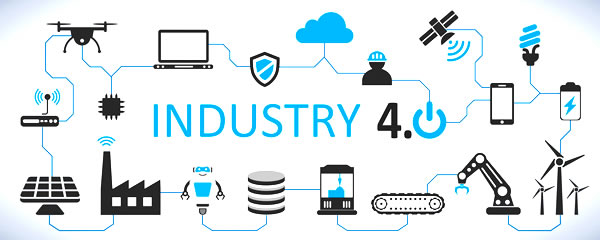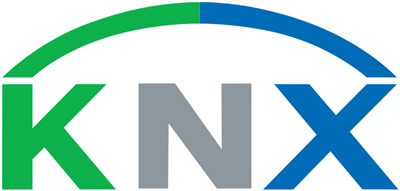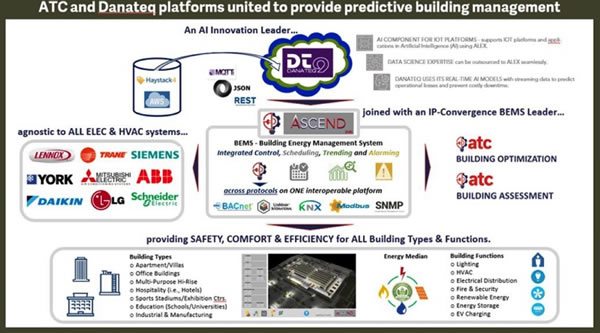 By Philip R. Juneau, ATC.
By Philip R. Juneau, ATC.
The international community is truly in an interesting mindset these days; with the nearly endless streams of information flooding through our conscious state, we rarely have time to quiet our minds in order to think creatively, innovatively, or even rationally. I’m a member of Generation X, which means that as a child I grew up with television as the main source of media.
We’ve certainly come a long way since then. First came pagers, then cumbersome car phones, pocket organisers, mobile phones, smart phones, smart watches/devices… and now we’re talking about artificial intelligence (AI), machine learning, cloud analytics/ diagnostics and other services. Generation X has truly experienced the hockey stick of technological development!
Industry 4.0 is a great example of this for the industrial market segment, whereby discrete automation and robotics within the manufacturing environment are now connected to cloud diagnostics and analytics while simultaneously picking, assembling and placing on the manufacturing lines directly with humans. The question is not what innovation comes next, but how to effectively use the abundance of technology that surrounds, even confuses, us, to make an environmental and social impact.

A holistic approach
If you approach a building like you would a human body, you would take a holistic approach and ensure ALL systems are automatically working in unison with each other in order to have an intelligent building. Yet, based on dated business models and resistance to change, we continue to construct buildings in trade silos, meaning the different trades (or systems) in the building, such as mechanical, electrical distribution, lighting, security, fire, etc, are built without true integration and interoperability. The controls are executed in silos as well. This is like putting our body together with all our life-sustaining systems but leaving the brain out.
The pitfalls of proprietary protocols
Even in the MasterFormat (a standard for organising specifications and other written information for commercial and institutional building projects in the US and Canada) specification defining the building trade divisions, there is Division 25 – Integrated Automation; however, this division is rarely seen in the contracting market. This doesn’t mean that specifications across building systems do not exist. There are select projects with specifications that require integration across various building trades; however, they are not based on open protocols on the field level. This means that the lowest level of control, the device level, typically have sensors, actuators and switches which are proprietary to the manufacturer. Therefore, you are ‘locked-in’ to that company unless you shell out the money to needlessly change every device throughout the facility.
The need for standards
In commercial buildings, BACnet is the eminent and open standard for automating HVAC controls. Additionally, Modbus and M-bus are standards for electrical distribution and metering, respectively. There is also LONworks, although this standard is diminishing in the market for various reasons.
There is hope thanks to the advent of the IP-based controller providing Internet access on BACnet, with all the data points available for trending, scheduling and alarming. This provides interoperability, however incomplete, with respect to the entire building, as it covers control at automation level. But the lowest point of control, at field device level, is left out. This level is where the BACnet profiles can only be linked/tagged/labelled within their proprietary controls programming language. As a consequence, when you require replacement or new field devices for a building renovation, it must be using the manufacturer’s field-level protocol, which will be based on either their proprietary field bus protocol or on BACnet MS/TP – both requiring the manufacturer to replace parts and reprogram the controller with their proprietary software.
The advantages of KNX
By using open protocols at the automation and field levels and IP-based platforms to converge all protocols in their native language, the customer is protected from reliance on one manufacturer. Now there is a choice!
The solution to the issue of field level interoperability is to embrace the international building control standard, KNX, which is adopted by ASHRAE (American Society of Heating, Refrigerating and Air-Conditioning Engineers) for building controls.

KNX has a long pedigree. In 1990 fifteen well-known European manufacturers of the electrical industry founded the European Installation Bus Association EIBA. They developed a bus technology for electrical installations that was fit for the future, and a manufacturer-independent software programming tool. This was later merged with two other control protocols resulting in the KNX protocol in 2001 which was approved as a European standard in 2003 and a worldwide standard in 2006. KNX is now used in over 190 countries globally by at least 470 manufacturers (a.k.a. KNX Members), 470 training centres, 8000 products and 83,000 KNX systems integrators (a.k.a. KNX Partners).
KNX enables you to have a smart field device, configurable to your needs with robust communication, on a distributed network of other intelligent devices; plus, it allows you to have one communication wire run for both HVAC and lighting (two trade silos), saving on installation labour, wiring, switches and thermostats. You can group devices with ease, meaning you can create a multitude of control applications specific to the occupants’ needs. In addition, KNX is completely interoperable with BACnet and all other open protocols, and is proven to be reliable, robust and future proof. As a member of the KNX USA National Group, I am excited by what this means for the US market – to reach the next level in field-level automation like the rest of the world.
Having covered the automation- and field-level interoperability, we are left with the IP-convergence platform. There are a handful of platforms on the market, the most prevalent here in the US being Honeywell Tridium’s Niagara platform. However, there are others which provide equivalent levels of integration, interoperability and access to cloud-based applications using IP-based communication such as MQTT, JSON or a REST API.
At Automated Technology Company (ATC), we have a sophisticated, seamless platform called ASCEND (powered by Eisbaer) that provides the IP-convergence in the building. ASCEND enables the Internet of Things (IoT) and digitalisation via the Local Network of Things, which joins the building data together on ONE platform. As a result, every occupant can use their smartphone, tablet or computer to participate in their comfort and safety whilst making the building efficient. By converging on IP, you bring your house in order by aligning all of your building data using open protocols on both the field (KNX) and automation (BACnet) controls level in the building across all of the trade systems (silos). Therefore, it is only with intelligent buildings that we can achieve the next level in cloud diagnostics/analytics and, more importantly, dynamically feedback into the building to reach the next level of safety, comfort and efficiency!
Truly intelligent buildings
It is a misconception that converging your building on IP makes it intelligent. Intelligence means being able to ‘think’ in real time and anticipate what happens next. Since ATC has the data sets disseminated and defined in the building with IP convergence, we can now use AI to predict building operation, making it a truly intelligent building. The term we use is Predictive Building Management, whereby ATC has partnered with Danateq, a truly innovative AI company, to link the ASCEND platform with Alex, their AI platform. The data sets are exchanged dynamically, in real-time, to predict future occurrences and immediately take remedial or preventative action in advance.

Conclusion
The future of building automation is available today. I am calling out to you early adopters who embrace change and innovation – the architects, engineering consultants, building contractors, developers, owners, manufacturers, systems integrators, and those who are truly interested and willing to have an open dialogue about how we can bring change for the better to building technology. The power is through our cooperation and actions, which will bring about true innovation with the current, proven industry and open standard technology available.
Now, we can truly say that everyone has a choice in how safety, comfort and efficiency are intelligently applied in the built environment, to smart cities and ultimately to a sustainable world.
Philip R. Juneau is the Chief Commercial Officer for Automated Technology Company (ATC), and a member of the KNX USA National Group. ATC’s mission is to transform today’s buildings into tomorrow’s net-zero infrastructure by ensuring the highest levels of safety, comfort and efficiency for the overall well-being of occupants and the environment.












